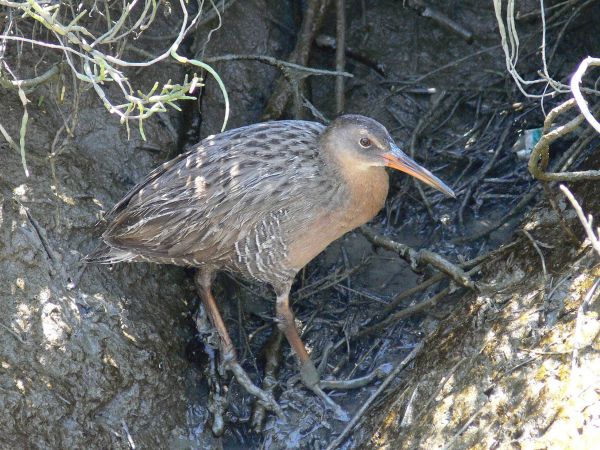
A miserable little pile of secrets… no wait, that’s something else.
But rails are commonly paired with the adjective “secretive.” While I’m well-known for my love of alcids, the rallidae are also a weird and wonderful bird family that deserve more attention overall. Coots and gallinules are great, but today I’m going to concentrate on the rails and crakes.
Squatter, less glamorous cousins to the cranes, they are a curious lot. They’re ground-dwellers, often in marshy areas, and in day to day life more apt to scuttle than fly – indeed, many island species are (or were) flightless, which partly accounts for their sad representation on the rolls of the endangered and recently extinct. But those species that do fly, despite their stubby wings, often migrate long distances and some species are downright prone to vagrancy. On the ground, in the day-to-day, they have an air of mystery despite being primarily sort of skinny-chicken-shaped. Seldom-seen to the point that at least one North American species is – based on my research – actually invisible.
Like herons and egrets, rails and crakes are quite similar, but different in a not quite taxonomicly consistent way. In general, the Europeans of yore assigned the common name “rail” to members of the family with longer bills and “crake” to the birds with stubby ones. That said, it’s not a consistent difference and in fact the migratory Corn Crake was once believed to be the summer plumage of the Water Rail, which stays put through the winter in Britain. Ray Reedman attributes the name rail to onomatopoeia, and crake as well. It seems a bit unkind to draw so much attention to the profoundly unmusical voices of these birds, but since they are generally more often heard than seen, it was perhaps inevitable. The scientific name Crex crex, so much on New Yorker’s lips of late, is also attributed to onomatopoeia via the Greek.
Featured image by Lee Karney courtesy of USFWS.













I love this family, and thank you for this article. Every time I see one we both (the bird and I ) react with such surprise that I too want to race away into the reeds with a squawk! I photograph them, or try, yet like Woodcocks and Snipes they provide a game of hide and seek unlike any other bird. We both stalk through the marsh quietly, in the early morning, near invisible to the rest of the world.